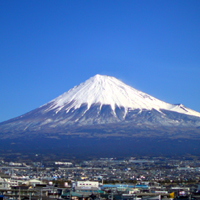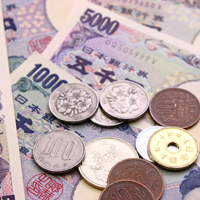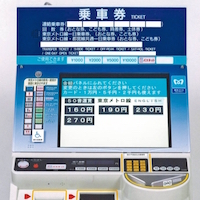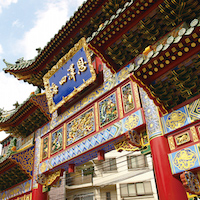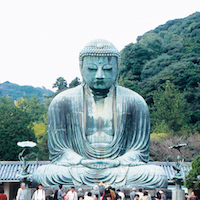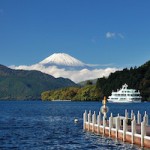The Kawagoe Festival (川越まつり) is a brilliant, gorgeous festival that takes place in what is often referred to as “Koedo” (小江戸), or Little-Edo, a town known for its many, well preserved, old fashioned Japanese ware-houses and businesses from several centuries…
The Expat's Guide to Japan
Everything you need to know about living and working in Tokyo & Yokohama
More results...
Blog Archives
Torinoichi
Torinoichi (酉の市) is the religious festival of Otori Shrine that takes place every year on the Day of the Rooster (酉の日, Tori no hi) in November. The festival flourished around the Kanto area during the Edo Period, with the celebration…
Chichibu Yomatsuri
This festival, with a history of over 300 years is designated as part of Japan’s “Important Intangible Folk Cultural Properties”. On the 2nd and 3rd, cars and floats decorated with paper lanterns parade the city. Some of these have performance…
Takayama Festival
This festival takes place in spring and autumn. Several hundreds of people dress up in traditional Japanese attire and dance and parade through town to old Shinto songs led by lion dancers. Designated as one of Japan’s “Important Intangible Folk…
Hamamatsu Festival
This festival celebrates the birth of the first son in the last year. With more than 1 million visitors, it ranges as one of the largest festivals in Japan. During the day, there are a number of kite flying competitions…
Kakegawa Festival
The fall festival in Kakegawa (掛川祭) is famous for its performances, “yatai” floats, and lion dance. The Grand Festival takes place only once every three years, the next being in 2012, with performers from each town dancing in procession. The…
Paul Rusch Festival Yatsugatake County Fair
This American-style Thanksgiving Festival is a rarity in Japan. Named after Dr. Paul Rusch, a Kentucky native who, focusing on the area around Yatsugatake Nanroku, devoted his life to helping rebuild Japan and introduce democracy after the war, this festival…
Aoi Festival
The origins of Aoi Matsuri (葵祭) can be traced back to the noble circles of the Imperial court. Among the many Japanese festivals it is known as one of the finest and rarest of its kind. Especially impressive is the…
Kyoto Gion Festival
The Gion Matsuri (祇園祭) is one of Japan’s three major festivals. It was first established in the year 869 in Kyoto and then became increasingly popular throughout Japan. Its primary objective has been to worship the Gion god and by…
Otsu Festival
Originating in the early part of the Edo Period, this religious festival includes a parade of magnificent, 13 story tall lantern floats. This festival is rare for its mechanical dolls (Karakuri Ningyo) which operate on special mechanisms such as “Koi…
Shika no Tsunokiri (deer horn cutting)
For almost 330 years, the Shika no Tsunokiri has been a marker of the fall season in Nara since the Edo Period. The event was started to protect townspeople, as well as valuable cultural properties from being damaged by bucks’…
Kyoto Jidai Festival
Established in 1895 to commemorate the 1,100th anniversary of the Heian Period move of the capital, this festival takes place at Heian Shrine. What is special about this festival, is that it offers you the chance to view a large…
Kurama Fire Festival
The Kurama Fire Festival (鞍馬の火祭) takes place every year on the 22nd of October at Yuki Shrine, in Kyoto. Starting at 6pm, watch fires called Kagaribi (篝火) are ignited in front of each household in the village and, while the…
Kōchi Yosakoi Festival
At this festival the unique “Yosakoi Naruko” dance is performed to the clapping rhythm of the Naruko (a wooden percussion instrument). On the evening of the 9th, there is a big fireworks competition at the Kagamigawa riverside and the main…
Awa Odori
The Awa Odori (阿波踊り) dance is one of the three Obon dances, and is performed to accompanying shamisen, taiko and flute music. During the festival period, a wide area of the town turns into a pedestrian paradise with dance stages…
Hakata Gion Yamakasa Festival
This festival which takes place at Kushida Shrine (櫛田神社), home to the patron deity of Hakata, looks back onto a history of more than 760 years. The Yamakasa here are large floats decorated with banners and puppets, which are presented…
Hakata Dontaku
Between 10:00am and 8:00pm, at 30 different locations in the Tenjin and Hakata districts, the so-called “Dontaku-tai” dance groups will perform displays of their skills. In the afternoon, there is also a parade at the Dontaku Plaza on Meiji Dori.…
Okinawa Zento Eisa Festival
Eisa (エイサー) is a traditional Okinawan dance festival, which takes place around the Obon holidays. In 1956, when Koza City (present-day Okinawa City) was established, this event began as an Eisa dance competition. Since then it has evolved into a…
Nagasaki Kunchi
This event consists of musical performances in honor of the patron deities of the surrounding villages which are kept at Suwa Shrine. One of the main features of this festival is its international flair, including cultural imports from Holland, Portugal…
Hita Sennen Akari
The historical town of Mameda (豆田) has been registered as a national cultural asset, and every year on the second weekend of November, Hita Tenryo Festival (日田天領祭り), a festival celebrating the historical importance of the area is held. The bamboo…
Taketa Chikuraku
Taketa Chikuraku (たけた竹楽) is an illumination event that started in 2000 in Taketa City, where over half the city is covered by forested land, with a good portion of it being varieties of bamboo. Bamboo was once a valuable material,…
Geography of Japan
Seasons & Climate of Japan
The Japanese Language
The Japanese Calendar & National Holidays
Japanese Customs & Practices
Money in Japan
Measurements
Power Supply
Trains in Japan
An overview of Japan’s rail network, and general information on train fares, tickets and prepaid IC cards.
Inter-city Travel by Rail
Rail Travel in Tokyo & Yokohama
Rail Tickets & Prepaid IC Cards
Tourist Passes & Day Tickets
Convenient discount tickets for train and bus services in the Tokyo area, and tourist passes including airport access combination tickets.
Buses in Japan
Taxis in Japan
Asakusa
TOKYO SKYTREE & TOKYO Solamachi & TOKYO mizumachi
Tokyo Tower
Imperial Palace

The Imperial Palace is the residence of the Emperor and Empress of Japan. Inside you will find the East Gardens (closed Mon & Fri every week and 12/28-1/3 every year) which are the former site of Edo Castle’s innermost circles of defense. Guided tours are available with advanced booking. The moat surrounding the palace is a popular jogging course.
Meiji Jingu
Ueno
Jindaiji
Built in 733, Jindaji, one of Tokyo’s oldest temples, is known for numerous soba shops in front of its temple gate, and 5,200 rosebushes in bloom in mid-May and mid-October in its botanical garden.
